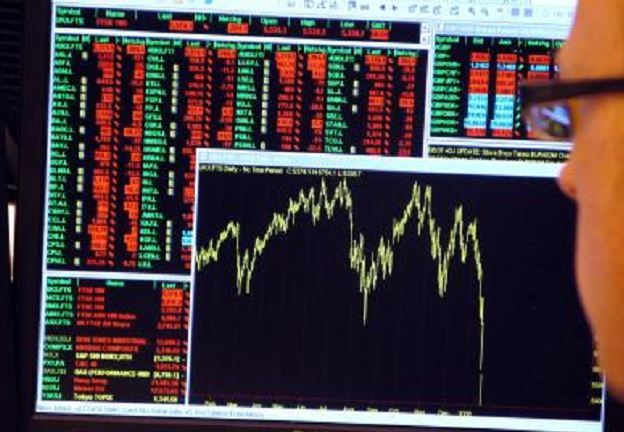
Wall Street is throwing the most money at U.S. energy companies since at least 2000 amid growing confidence that the industry is emerging from the worst downturn in a generation.
Energy firms raised $6.64 billion in 13 equity offerings in January, drawn in by a rich combination of oil prices consistently above $50 a barrel and a rush to drill that’s doubled the rigs in use in the U.S. and Canada since May. The biggest change from last year: Oilfield servicers that provide the rigs, fracking equipment and sand used by drillers.
The most beaten-down sector during a two-year price rout, servicers made up 22 percent of the equity totals in January, compared with 5 percent all last year.
“The mood is absolutely different,” according to Trey Stolz, an analyst in New Orleans at the investment banking firm Coker & Palmer Inc., in a phone interview. “Go back to a year ago and the knife was still falling. But today, it feels much, much better.”
Already, companies such as Weatherford International Plc. are able to charge more for the use of their equipment and services as explorers race to open the spigots in the fertile Permian Basin of West Texas and other U.S. shale fields, according to Krishna Shivram, Weatherford’s interim chief executive officer.
“We’re seeing signs of improved pricing of roughly 25 percent on average, versus December levels,” Shivram said last week in a conference call. “There is considerable optimism.”
Energy companies in the U.S. far outpaced the rest of the world, raising more than two thirds of the $9.41 billion in new or additional stock last month, according to data compiled by Bloomberg. New investments emerged around the globe, from the share sale of Thorney Technologies Ltd. in Australia to SD Standard Drilling Plc in Cyprus.
U.S. benchmark West Texas Intermediate crude traded at $52.62 a barrel on Thursday, up more than 20 percent from last year’s average.
The services sector was among the hardest hit during the downturn, slashing service prices by more than a third and contributing the greatest chunk of the 440,000 jobs slashed globally in that time. Now, a new dynamic is at play, evidenced by the emergence of the Keane Group, a Houston-based provider of fracking services, as one of the first initial public offerings for the U.S. in 2017.
Keane raised $508.4 million on Jan. 20. Though it may be surprising that an industry as volatile as hydraulic fracking produced an IPO in such a manner, consider that trading began on the day of President Donald Trump’s inauguration. The incoming president made energy independence a plank of his election platform and has promised to roll back regulations on the drilling industry.
“We have potentially an exponential increase in demand for our services with the rig count that’s increased over the last couple of quarters,” Chief Executive Officer James Stewart of the Keane Group, said in a Jan,. 20 telephone interview. “The public equity markets are looking to invest in pure-play completion companies with a footprint and a growth story.”
Stock Sellers
Other U.S. service companies that sold shares last month were Helix Energy Solutions Group Inc., Atwood Oceanics Inc. and Patterson-UTI Energy Inc., for a combined $899 million.Services companies, though, weren’t alone in drawing investment. The Williams Companies, Inc., a pipeline company, raised $2.17 billion while oil explorers Parsley Energy Inc. and Jagged Peak Energy Inc. raked in $885.5 million and $474 million, respectively.
There’s no sign that companies are done raising money. Parsley dipped back into the market Tuesday to raise $1.12 billion from 36 million new shares offered Tuesday that will help fund its $2.8 billion acquisition of drilling rights in the Permian.
The improved drilling efficiency and more monstrous frack jobs will inevitably lead to larger output from the shale wells, Stolz said.
International Headlines
“But it seems like the international headlines, whatever’s happening with OPEC or Saudi Arabia, that seems to be a lot more impactful than marginal improvement in wells in North American shale plays,” Stolz said. “Let’s not go out in the street and dance quite yet. It feels a lot better and there’s still a long way to go.”
The revival of drilling and acquisitions in the Permian Basin of West Texas made it a hot spot for equity offerings last year as well. The $14.6 billion of stock offerings by independent Permian drillers last year made up more than a third of the energy industry’s total, according to data compiled by Bloomberg.
“The world looks a lot better to the service company now than it did 6 months ago,” David Oelman, co-head of the capital markets at Vinson & Elkins in Houston, said in a phone interview. “It looks like we’re in a place where the momentum is making energy investments pretty attractive.”
Recommended for you
